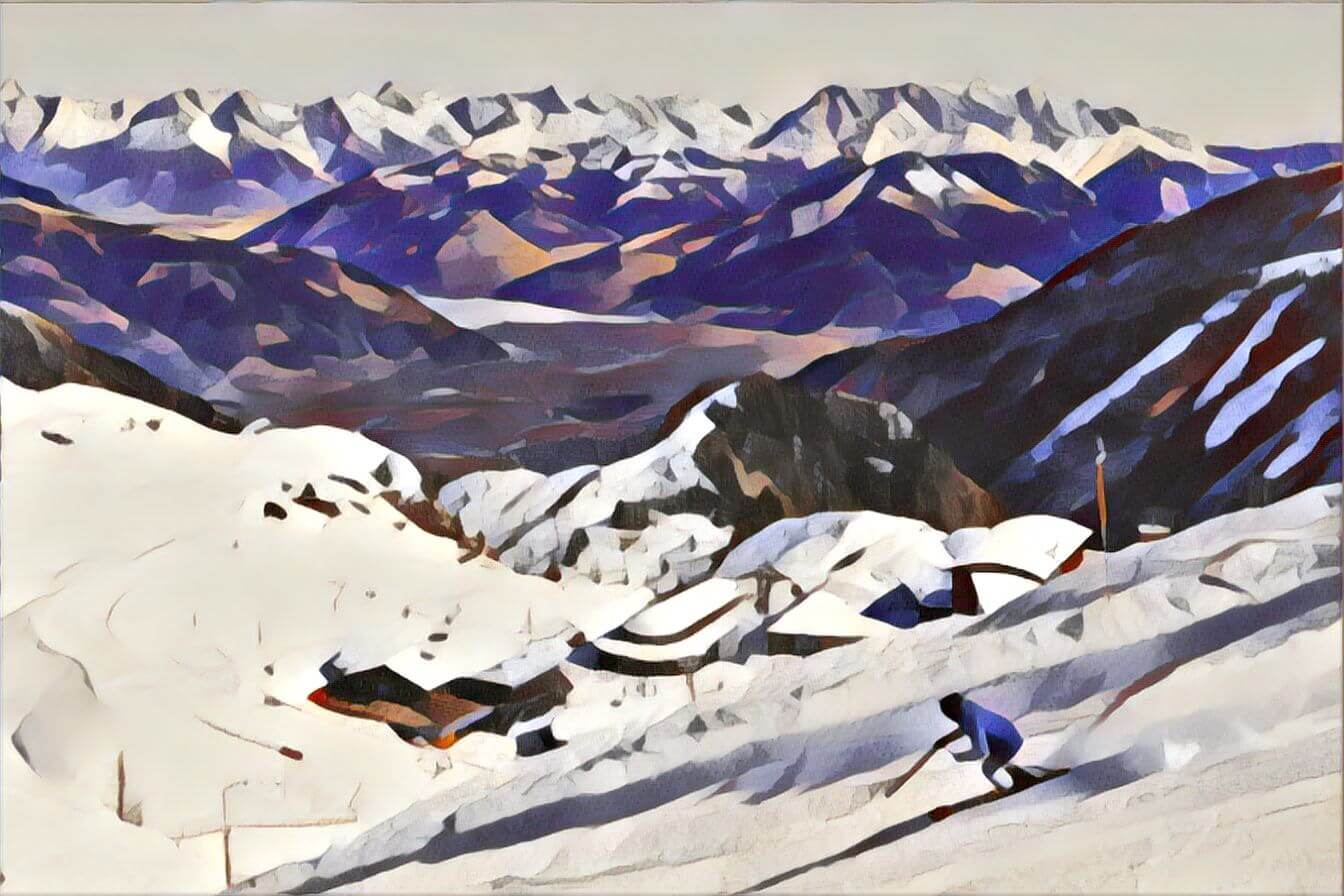Whether you’re spending the day cross-country skiing or taking the chair up to zip back down a double diamond slope, Merino wool is, in our view, an essential piece of your gear.
Often described as nature’s high performance fabric, merino will breath to prevent overheating and clamminess, keeping you warm and dry without the weight of other fabrics. It fits under other out layers, providing you with freedom of movement.
Below, we’ve taken our years of experience in the Austrian Alps as well as our love of merino wool to find the best garments to keep you out on the slopes for longer.
If you’re already familiar with merino wool, and you just want to see the best 2018 picks, jump directly to our recommendations.
If you want to dig a bit more into why merino and figure out what matters when it comes to choosing the right gear, have a closer look at the FAQ section just below.
What to consider when choosing merino wool for snow activities:
These days, there are a massive amount of options when it comes to merino wool snow gear and even more when it comes to snow gear in general. Here’re some tips we put together for finding the right gear.
There’s an old debate in the outdoor world whether merino wool or synthetic fabric are better choices for base layers.
It’s obvious where we stand at Merino Wool Rocks – merino! We choose merino because it is highly insulating, meaning that it will keep you warm when it’s cool outside. However, insulating materials such as merino will also keep you cooler when it’s warm.
So that means when you go from icey outdoors into a warm environment – say a Bavarian Gasthaus with a roaring fireplace – you won’t start overheating.
The key to moderating your body temperature is to use multiple layers that work together. A good base layer will wick away moisture from the skin, keeping you dry and therefore warm. A mid layer will provide insulation, while an outer layer provides protection from wind and rain.
This system makes it easy to regulate warmth whether having lunch inside a ski hut or taking the chairlift up the mountain in freezing conditions.
Merino wool comes in a range of weight. This weight is typically expressed in terms of grams per square meter of fabric.
You’ll find fabric weights ranging from 120 g/m² on the very light side up to 400 g/m² for extremely cold conditions.
Heavier is not, always better, however. The key is to layer multiple layers. For skiing or snowboarding 200 g/m² is a good option for a base layer, while a mid-layer might be 260 g/m².
You could consider the heavier fabrics if you’re spending a lot of time sitting around in extremely cold conditions. Hunting or fishing can be good examples where it makes sense to go for a 300-400 g/m² base layer.
Flatlock seams don’t have a protruding seam, unlike regular seams. These “flatlock” seams result in less chafing and irritation when you’re active. Having such seams is particularly important for the layers that are the closest from the skin such as underwear or baselayers.
So for your skiing or snowboarding gear, avoid regular seams, which tend to create some chafing and irritation of the skin by rubbing against it repeatedly. The same goes for labels that stick out: they quickly cause chafing and irritation when you’re on the slopes.
Style and function don’t have to be at odds when it comes to active gear these days. While choosing the look that you like best, it’s also good to look out for drop-tail tops, which prevents the back of the top riding up and getting cold snow down your pants, which is never fun.
Thumb-hole sleeves can also be good options when you’re skiing or snowboarding.
For long top and bottom thermal underwear, resist to your natural habit of washing them often. There was no need and hanging them in the sun can be as efficient as washing them!
Best upper body base layer for snow sports
Typically a long sleeve merino wool base layer is all you’re going to need to wear under your fleece and jacket. That is why we go with long sleeved baselayer when recommending base layers for winter sports.
Now, a couple of things matter to make sure you are comfortable on the slopes: First, flat seams to prevent shaving – especially around the shoulder and armpit and a slightly longer cut so you can tuck it in your leggings or pants and longer than usual sleeves to tuck it into your gloves and make sure no snow sneaks in.
You can even consider thumb loops, but we have found them uncomfortable in the long run to wear on top of the thumb loops already provided by our ski jackets.
Other than that, you can either go for a higher neck neck and additional 3/4 zip like Tom as it allows him to regulate easily his body temperature between rides, or go with a normal one with an additional neck warmer tucked in the baselayer like Caro likes.
Our Men’s pick

- Material: Body: 97% Merino Wool, 3% LYCRA® / Panels: 78% Merino Wool, 22% Polyester / Eyelet: 98% Merino Wool, 1% LYCRA®, 1% Nylon
- Fabric weight: 260 g/m2
- Features: Flatlock seam construction designed to eliminate chafing / thumbholes to stay put / Mesh panels for ventilation
260 g/m2 is on the heavier side for merino. It means that this base layers is best suited for winter conditions and should be enough to be worn direclty under your snow pants and jackets if you stay active. It has a ight fit with a slighly longer torso cut than usual, which makes this baselayer particularly suited for winter sports.
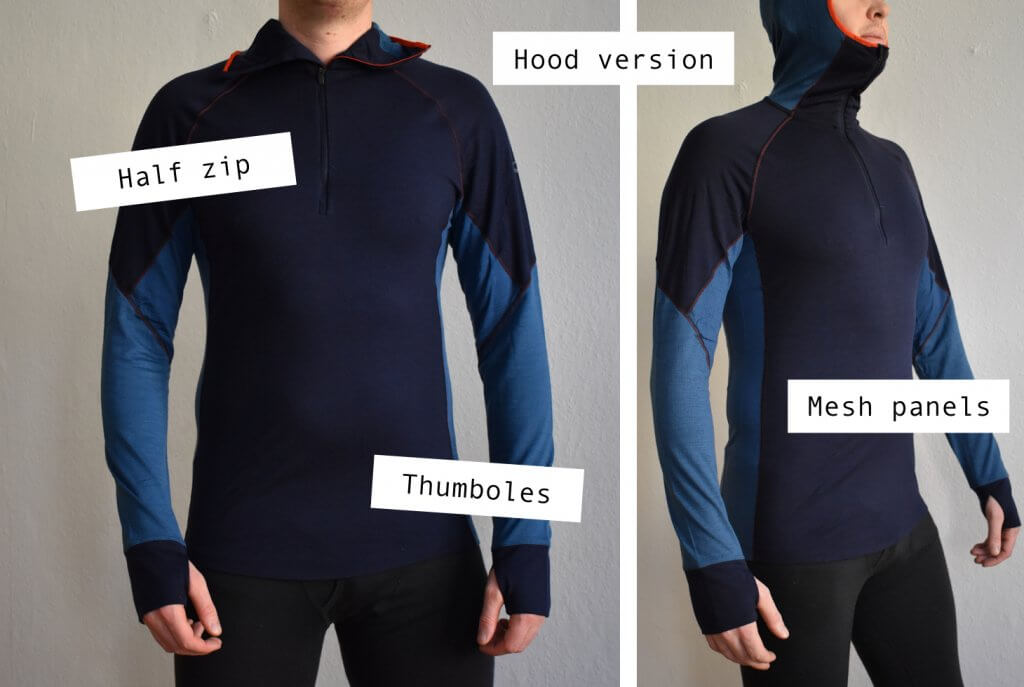
Note that this model also exists with a practical hood that keeps you warm under your helmet as I am wearing above. You can read the reviews of the model with hood on Icebreacker and see availibility on Amazon.
The Bodyfitzone collection from Icebreaker was specially designed for high intensity activities, which is why they have added mesh panels. It both helps with mobility as it let you twist and turn and with sweat management by bringing ventilation in high-sweat zones.
Thumbholes solve a multitude of cold weather sins. They help keep your sleeves in place when you’re moving or putting another layer over the top. They can also keep your hands warm and eliminate the icy gap between the bottom of your sleeves and your gloves.
See on Icebreaker | Check price on Amazon
Our Women’s Pick
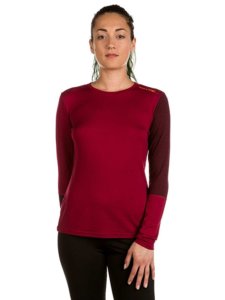
- Material: 100% Merino Wool
- Fabric weight: 185g/m2
- Fiber: Fine 18-micron fiber
- Best for: Ski and snowboarding
- Price (estimate): $110.00
Ortovox is a brand specialised in clothing for winter sport athletes based in the UK.
I also wear a neckwarmer from Buff when snowboarding. You can find one of their most popular merino wool models on Amazon.
See on Ortovox | Check price on Amazon
Best bottom baselayers / leggings to wear under your ski pants
Our Women’s Pick
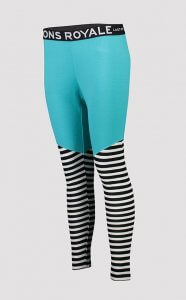
- Material: 100% Merino Wool
- Fabric weight: 190 g/m2
- Best for: Ski and snowboarding
- Price range (estimate): $60 – $90
Mons Royale makes all their clothing out of merino, with an edge for snow gears, with a wild focus on not making sure technical and functionnal clothing does not equal boring clothes. And so of course we love their graphics and the different colors of the Christy Leggings. Note that you might prefer their Alagna model made of the same design but with a 3/4 length which you might find better suited for skiing as it would even prevent chaffing in skiing boots.
They just look so good that the long length allows us to wear them even off the slopes.
See on Mons Royale | Check price on Amazon
Our Men’s pick
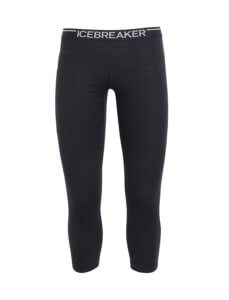
- Material: 100% Merino Wool
- Fabric weight: 200 g/m2
- Best for: snowsports such as skiing and snowboarding
- Price range (estimate): $52.83 – $80.00 9
This recommendation is based on my own personal experience with Icebreaker leggings. I’ve had my current for over four years now, and I love wearing them snowboarding or camping in chillier conditions. They also work great if you’re cycling in very cold conditions.
See on Icebreaker | Check price on Amazon
Best socks for skiing and snowboarding
For skiing or snowboarding, you’re best served with a mid-weight socks that go above the cuff of your boots, so you don’t get chaffed, but don’t extend past the knee.
The reason is that socks that are too high will reduce your mobility. Otherwise, heavier is not necessarily better, as overly thick socks can cause your feet to sweat, which in turn will give you “cold feet” feeling. Very thick socks also reduce the feedback you’ll get through your boots.
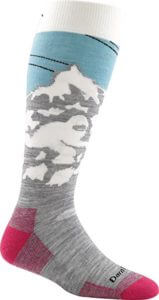
Darn Tough Yeti OTC Cushion Socks – Women’s
- Material: 68% Merino Wool, 28% Nylon, 4% Lycra® Spandex
- Rating out of 5 stars: 5
- Price range (estimate): $25
- Designed for: skiing and snowboarding
Very cute mountain socks with a perfect amount of cushioning along the bottom of the foot. These will keep you warm. Some people have reported feeling tight around the calves though.
Check these socks on Darn Tough’s site | Check Price on Amazon
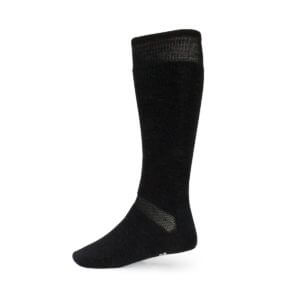
Minus33 Men’s Ski and Snowboard Socks
- Material: 78% Merino wool, 15% Spandex, 4% Nylon, 3% Polyester
- Rating out of 5 stars: 4.4
- Price range (estimate): $16
- Designed for: skiing and snowboarding
Minus33 is a US-based company that has exploded onto the merino wool scene in recent years. They combine high quality with reasonable prices, and these ski socks are no exception. They offer full cushion for comfort and 78% merino wool to keep your feet warm and dry no matter how many runs you get in.
Best underwear for skiing and snowboarding
Our Women’s Pick
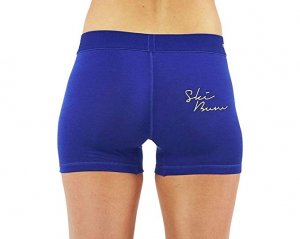
- Material: 83% Merino Wool, 13% Nylon, 4% Elastane
- Fabric weight: 140 g/m2
- Best for: Ski and snowboarding
- Price range (estimate): $30 – $40
Boyshorts are great Winter underwear and snow sports as they offer more coverage and don’t tend to ride up as much as panties. We like the sporty look of the Mons Royale, the wide waistband that doesn’t dig in and lies flat against yours. But more than anything, we love the cheeky “Ski Bum” mention.
See on Mons Royale | Check price on Amazon
Our Men’s Pick
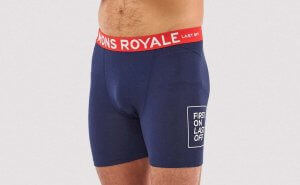
- Material: 83% Merino Wool, 13% Nylon, 4% Elastane
- Fabric weight: 140 g/m2
- Best for: Ski and snowboarding
- Price range (estimate): $30 – $40
These underwear offers great features such as no side seams to prevent chaffin and a wide band insuring they remain put. With these extra layers of warmth, you will hopefully be “first on, last off” the slopes. 🏂
See on Mons Royale | Check price on Amazon
Best merino accessories for skiing and snowboarding
Best neckwarmer
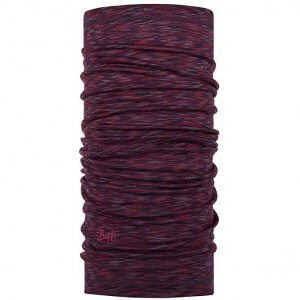
- Material: 100% Merino Wool
- Fabric weight: 125 g/m2
- Price range (estimate): $25 – $35
We particularly like the lightweight graphics design but they also exists in plain colors, as well as a mid-weight warmer version.
See on Buff’s website | Check price on Amazon

